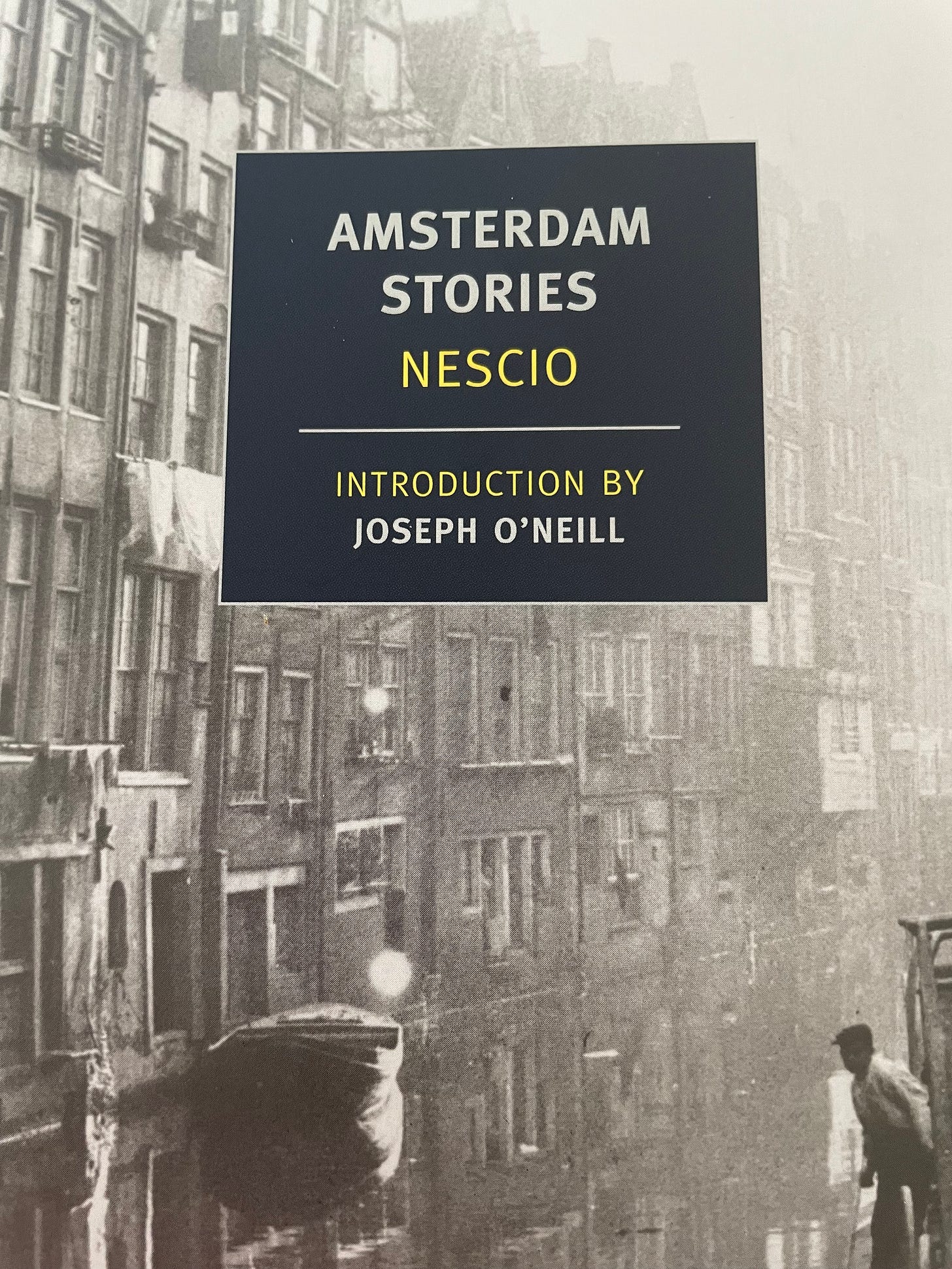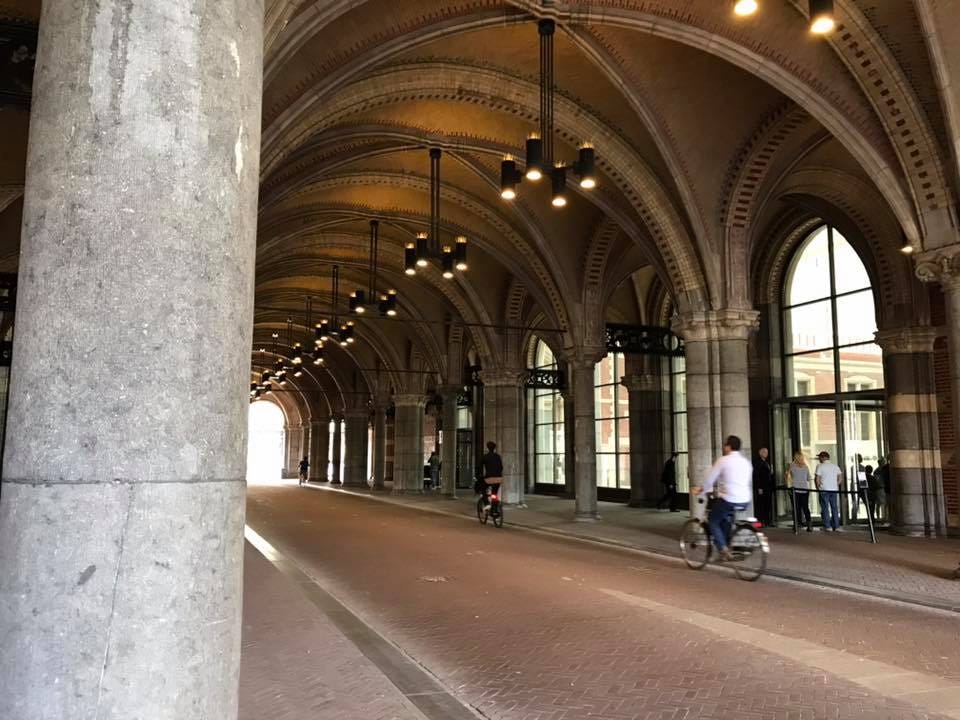I DON'T KNOW WHAT IT IS ABOUT NESCIO
This Dutch collection of stories penned between 1917-1942 captivated me. I think it must be required reading for every young adult.

Nescio translates to “I don’t know” in Latin. That seemed to be the underlying theme of this interlinked collection of Dutch stories in which the characters do not know what they are about or why they feel a certain way. I must add that as a reader, I too don’t know, at the end of my reading, why I found this clutch of tales gripping even though not too much happens in most of them. In addition to the stories, there was an introductory note by Joseph O’Neill that was such a delight to read and so infuriatingly well-written that I couldn’t wait to plunge into the book.
When I did begin reading these Dutch stories, I didn’t know if I could articulate precisely why I was touched by each narrative. Kudos to Nescio for entertaining, exploring, and teasing while breaking a reader’s heart. I was often speechless at the way in which the words had been strung together, with a whipped cream effortlessness.
Jan Hendrik Frederik Grönloh, known by his pen name of Nescio, was a Dutch writer. A businessman by profession, Nescio is mainly remembered for the three novellas De uitvreter (The Freeloader), Titaantjes (Young Titans), and Dichtertje (Little Poet). Apparently, his reputation as an important Dutch writer was established only after his death. If you have a little time, do read this gastronomic exercise by Paris Review in cooking food based on Nescio’s references to food in his stories.
The opening story leads us all into familiar territory. We’ve seen freeloaders, the ones who are always taking but not giving. He’s the pleasant guy who walks into your home and partakes of your food and all that you have without telling you when he is planning to decamp. In the 1980s, a few years after I arrived in America, such a character visited our home, a young teen, who was clearly never ever leaving.
The freeloader who always ordered in someone else’s name, who sat and drank jenever like a prince at the outdoor tables of the Hollandais on other people’s tabs, who borrowed umbrellas and never brought them back, who heated Bavink’s secondhand stove until it cracked, who wore his brother’s double collars and loaned out Appi’s books, and took trips abroad whenever he’d hit up his old man for money again, and wore suits he never paid for. His first name was Japi. I never knew his last name.
Japi, The Freeloader in this book, is different, however, He is giving but we don’t know this until well into the story. Japi sees things we do not. He is unaffected by all that disorients us. He drinks deeply from nature. He notices when a tree is missing from a landscape. He helps Bavink, the painter, see things that he cannot. What he gave Bavink isn’t clear until we are well into the story.
“He knew everything along the railroad line from Middelburg to Amsterdam: every field, every ditch, every house, every road, every stand of trees, every patch of heather in Brabant, every switch in the tracks.If you had been traveling for hours in the dark and Japi was stretched out asleep on the streets the whole time and you woke him up and asked “Japi, where are we?” you would just have to wait until he fully woke up and all he had to do was listen to the sound of the train on the tracks and then he’d say, “I think we’re in Etten-Leur.” And he’d be right.”
The freeloader of the story is loquacious. There is nothing he does not know. He’s not just finding his place in the world. He finds himself long before the rest of us realized that truly belonging to the earth behoves to ask questions about why we we are even here. Japi is the eternal vagabond traipsing through life’s countless vicissitudes. Yet, he has to leave every home he steps into, and he would have to leave the world, too, albeit on his terms.

The Freeloader was finished in 1910, when Nescio himself was entering his early thirties. He had begun working at the Holland-Bombay Trading Company in 1904, was married in 1906, and already had three of his four daughters by 1910. Clearly, his carefree days of early adulthood would never return. Through the character of the insatiable Japi, Nescio seems to mouth the unsayable. We hear the same refrain through the story.
And then, with a few variations, he repeated his old reverie about the water, how it flowed eternally to the west, out toward the sun every night. In Nijmegen there was a doctor who had taken the same walk at the same time every morning for fifty-three years — over the Valkhof hill and down the north side and up the Waalkade to the railroad bridge. That’s more than 19,300 times. And always the water flowed to the west. And it didn’t mean anything. It must have flowed like that for a hundred times fifty-three years. Longer. Now there’s a bridge over it. Every year is 365 day; ten years is 3,650 sunrises. Every day is 24 hours, and every hour more goes through the heads of all those constantly worrying people than you could set down in a thousand books. Thousands of worriers who saw that bridge are dead now. And still, it’s only been there a short time.
The ending is inevitable but it’s perfect. It reminded me of the words of Jiddu Krishnamurthi—one of the greatest thinkers and religious teachers of all time. who did not expound any philosophy or religion.
“What does it mean to die? Put that question to yourself. While we are young, or when we are very old, this question is always there. It means to be totally free, to be totally unattached to everything that man has put together, or what you have put together, totally free. No attachments, no gods, no future, no past. You don't see the beauty of it, the greatness of it, the extraordinary strength of it while living to be dying. You understand what that means? While you are living, every moment you are dying, so that throughout life you are not attached to anything. That is what death means.”
Every character in Amsterdam Stories struck a chord in me and made me see myself and my children in them. Not every story works equally well, of course, but there is an unfailing melancholy leaking out of mini personal disappointments that is expressed by the personalities who walk about—and do they walk a lot!—through the book. The stories take us through the years, and we see how these boys do find a modicum of success and no longer struggle to make money. Yet, years later, they’re no longer certain they’ve ever done anything worth doing. Japi too shows himself to be capable of a demonic amount of work but what difference did that make to his existence?
The longer works in the book are among Nescio’s most powerful. Young Titans is about five young men in a tumultuous period in their lives set in pre-World War I Amsterdam. Bavink, the painter needs constant affirmation, Koekebakker, the clerk, has his wits about him but doesn’t amount to much. Bekker, the poet is afraid to write, Hoyer, the billboard painter who aspires to political office begins to sacrifice his ideals for money, and Kees, the no-good, blames his life on his four other friends, until they don’t hear from him anymore. In Little Poet, we watch a man whose greatest creative moments may be when he’s longing to be infatuated with a woman or is seeking to be in love. However successful he is in the world of work, his failure as a poet informs his entire existence until he sacrifices everything, even his marriage, for his poetry.
One of the tales is part of a draft material from a piece that Nescio abandoned. Titled From An Unfinished Novel, this says a lot about mutuality. The sentence isn’t quite perfect, yet I was intrigued. How many of us really listen to someone without already formulating a response in our heads?
I had met someone that summer, someone I went to school with eighteen years earlier, and right away we started talking and couldn’t stop. That happens only once or twice in a lifetime. When one of us talked the other one sat there without thinking about what he was going to say when it was his turn, he listened, eloquently. We couldn’t get enough of it.
One character, Bavink, moved me deeply and he is a presence in most of the stories. With just two lines Nescio manages to tell me how it would always be impossible for us to achieve our highest potential. This is expressed poignantly through the heart of a passionate artist. I suppose it’s also a cautionary tale about seeking balance in one’s life.
I remember one day when we, Bavink and I, went to the seaside and half the sun lay big and cold and red on the horizon. Bavink hit his forehead with his fist and said, “God, God, I’ll never paint that. I’ll never be able to paint that.” Now he’s in a mental hospital.
AMSTERDAM STORIES is a sly little book about the arrogance of youth and the disillusionment of middle age. It left me winded and alive. It reminded me that I was all those nomadic human beings contained in those artful stories. Plagued by similar uncertainties in my youth and, later tormented by insecurities as I compared myself with others around me, I set expectations for myself that I would never meet.
There was no one on that stretch of Herengracht. The green and gold crowns of the trees were still thick with leaves. One by one the yellow and brown leaves slowly fell, you could count them as they fell. They lay quietly on the cobblestones, which were damp, and black, and in a little puddle that was still there somehow. Whole fields of them lay quiet in the water of the canal.





I'm obsessed with short stories at the moment -- this collection sounds like a fantastic new addition to my list!!
Once, when I was visiting Amsterdam in winter, we awoke to a fresh five inches of snow. The city was even more beautiful. We rented bicycles and--just like everyone else--took to the streets to head off for our destination: the Van Gogh museum. It was all about the light!